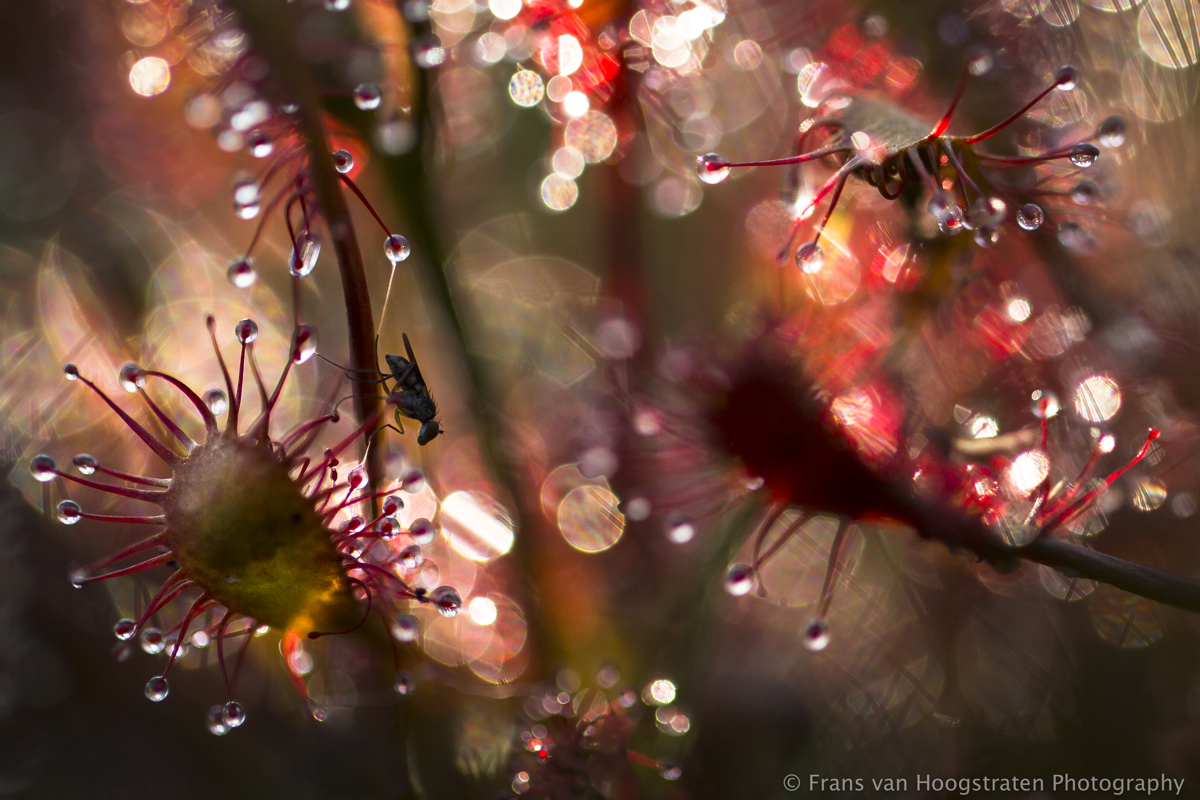

"Sundew, dangerously beautiful" : Drosera, commonly known as the sundews, comprise one of the largest genera of carnivorous plants, with at least 194 species. Both the botanical name (from the Greek drosos = "dew, dewdrops") and the English common name sundew, refer to the glistening drops of mucilage at the tip of each tentacle that resemble drops of morning dew. These tentacles trap, and digest small insects. They are attracted by a sugary scent exuded by the glands. Bulkier insects with large wings are also caught. They become immobilized and succumb to death through exhaustion or asphyxiation. The plant's initial response to contact with prey consists of thigmotropic tentacle movement (response to touch). The odorless, nectar-less flowers do not rely on insect pollinators for pollination, rather setting seed well through self-pollination (autogamy).
